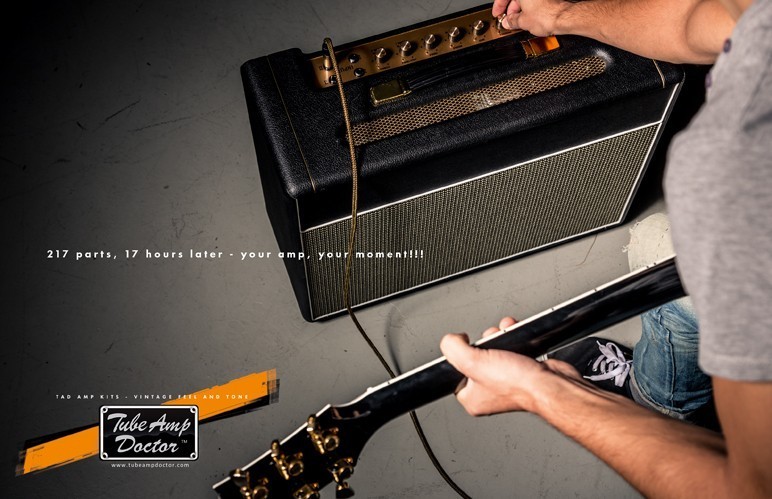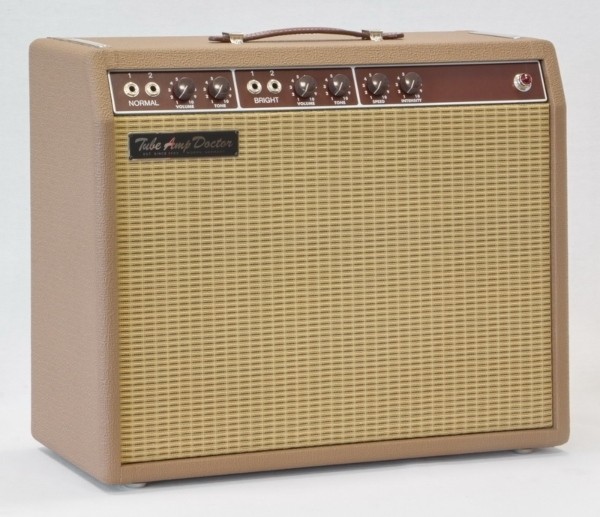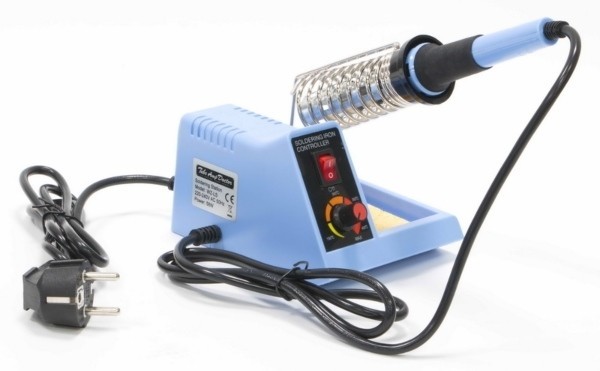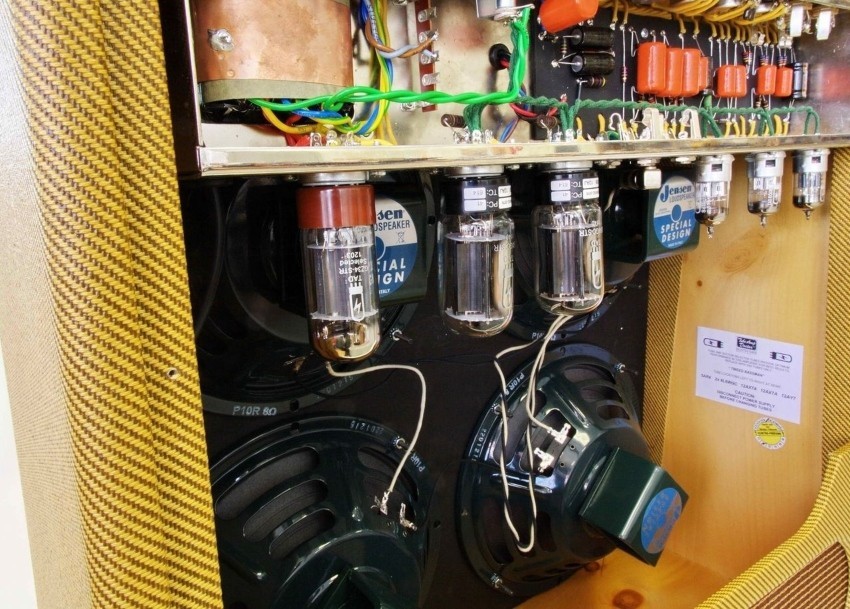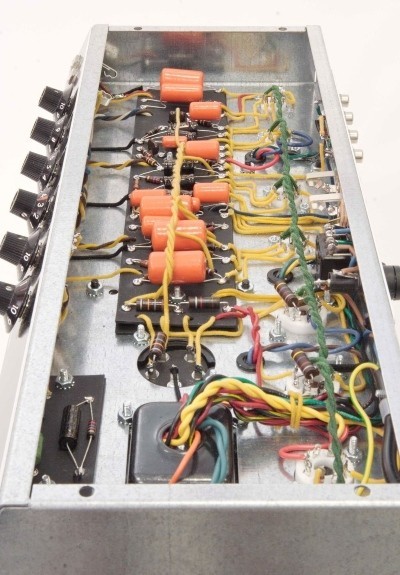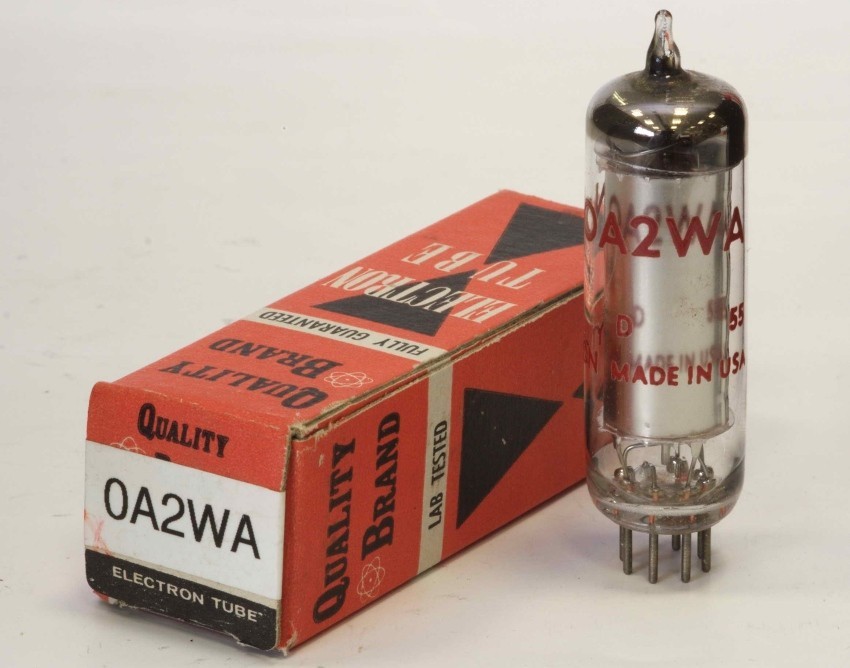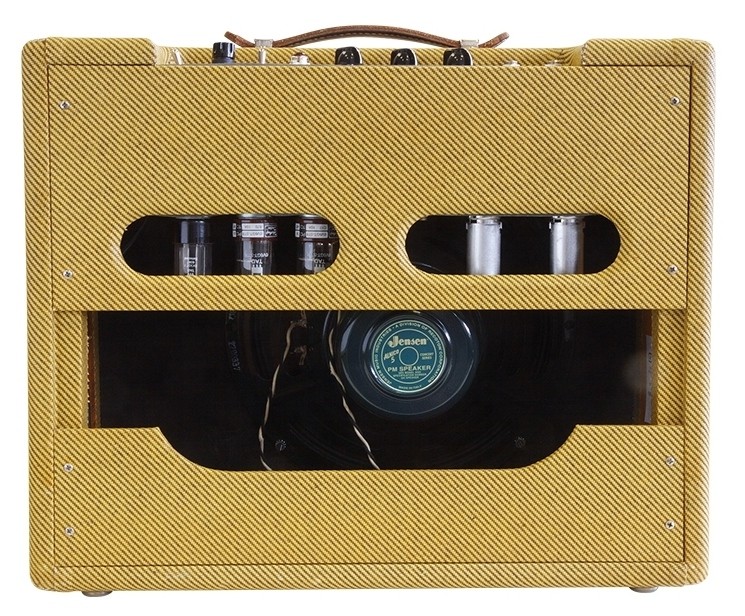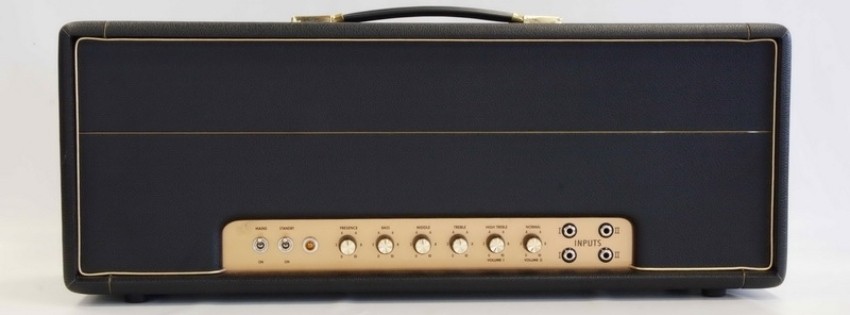« For whom is a DIY kit suitable? »
Rich midrange and creamy distortion – for many guitarists, the tube amp is indispensable for creating a perfect sound. The selection on the market is almost overwhelming. Yet, there are limitations: Classic sounds, like those from early Fender amps in the company’s history, are almost unaffordable, with five-figure sums not uncommon in the used market.
So what to do when your budget is limited but your ear is insatiable?
Certainly – a spectacular foray into the sanctuaries of the Fender museum. For those to whom this step seems a bit too extreme, Tube Amp Doctor offers a perfect alternative: DIY kits of well-known amps are kept as close as possible to the original in terms of technology, and thanks to high-quality components, they achieve the corresponding sound.
But for whom is a kit suitable? What prerequisites, tools, and skills should be present to successfully carry out the “amplifier construction” project? Let’s look at the necessary skills and abilities that an amp builder should bring.
Tube amplifier in self-construction – what’s behind it
Tube amplifiers are purely analog devices, but they still contain a whole range of highly technical, sensitive components. Anyone considering building their dream amp must be aware of the tasks and challenges they will face.
Component selection
First, a decision must be made about which components and parts will be housed in the newly created amplifier. A good starting point is the DIY amplifier construction kits from Tube Amp Doctor, but complete self-construction is also possible. Initially, it helps to explore the different sounds of historical models. What sound do I want to achieve? Based on this preliminary research, the assembly of the appropriate components should not be a problem. Let’s summarize: The amplifier builder must have an overview of the different models and, above all, sounds.
Technical Requirements
Building a tube amplifier yourself is a long-term project. For it to succeed, the DIY guitarist needs the necessary technical tools. Tools, measuring instruments, a clean working environment that is undisturbed, dust-free, and quiet – all these factors influence the final result of amplifier construction. If you don’t have your own workshop, you should find a suitable space for the duration of the project. Importantly, foreign fingers have no place in your own equipment – the components of an amplifier are too sensitive.
Technical Expertise
Tube technology is delicate, sensitive, and, in parts, quite complex. To be successful in amplifier construction, a certain level of technical expertise is required. Handling a soldering iron, measuring instruments, multimeters, and precision tools must be mastered, as well as basic knowledge of electronics. The amp builder needs a bouquet of skills and must be familiar with electronics and manual tasks.

General Requirements
In addition to various skills and technical know-how, general requirements must also align in amplifier construction. Especially the factor “time” should not be underestimated in amplifier construction. For those seeking a quick replacement to replace a blown amplifier in the rehearsal room, it should be noted: a DIY kit is not the suitable solution! Time, tranquility, and above all, a bit of serenity – these are the most important general requirements for amplifier construction!
Successes and Setbacks in Amplifier Construction
Certainly, the idea of having built one’s own amp from the ground up is fantastic. However, in amplifier construction, setbacks also occur. Some of them are easy and quick to fix, while others result in profound changes to the tube amp. To be prepared for the worst, we have listed three points that arise in (almost) every project sooner or later.
Technical Defect – Type 1
With such delicate components, it’s not surprising that technical elements can break during amplifier construction. In the course of building a tube amplifier, it often happens that soldering irons get too hot or screws are tightened too much. Stay calm – the charming advantage of a kit is that all components are just that: individual parts. Replacements are quick and uncomplicated to obtain!
Technical Defect – Type 2
Unlike the technical defect of the first kind, the technical defect of the second kind occurs unexpectedly and, above all, inexplicably. “In theory,” everything should be correct, but the measurements don’t match? The signal should be reaching, but nothing is happening? As with all technically complex devices, patience and systematic work are now required in the construction of a tube amplifier. The error devil is somewhere – finding it is the big task. With patience, calmness, and the right equipment, however, this part is also easily navigated!
Sound Issues
The system is wired, all solder joints are clean, and the measurements are correct? When playing the first chords, the DIY guitarist must remain calm: Usually, the sound doesn’t fit immediately at the beginning. Tubes and components need to break in, settings must be adjusted, and eventually, the guitarist’s ear should also get accustomed to the sound of the amp kit. Those who remain calm and approach it analytically will soon call the individual sound their own!
Kits for Your DIY Project: Amplifier Construction with TAD
We offer a wide range of amp styles for DIY projects. Naturally, we have drawn inspiration from the big names of the past decades, and especially for fans and enthusiasts of authentic tube sounds, we provide a broad selection of amplifier kits. Let’s briefly introduce the different styles:
Fender Tweed
The Fender Tweed Style Amp is an absolute classic. The Tweed amps marked the triumph of the American traditional manufacturer. Not without reason, the Tweed amp with its creamy sound has influenced almost all music genres we have encountered since the 1950s! As the eye “listens along,” the Tweed amps are treated with a layer of nitro lacquer – creating a convincing and enchanting patina!
Fender Blackface
With Princeton Reverb, Deluxe Reverb, Super Reverb, Twin Reverb, and Tube Reverb, the Fender Blackface Style series offers true classics with a distinct, wonderfully spacious, and open sound. Spring reverb and high-quality tube components are on board, as well as a fantastic look – the Blackface is classic and elegant!
Fender Brownface
Loud and defined, the Brownface Deluxe produces an incredible reserve of clean sounds. An ideal companion for pedals of all kinds makes the Brownface a perfect experimentation platform from jazz to hard rock! Brownface Style Amps provide an authentic design with a larger Grand-Stack transformer.
Marshall Plexi
Of course, Marshall also offers some examples in its company history that can serve as inspiration for amplifier construction. The Plexi Style Amp from TAD is the rocker in its purest form – huge gain reserves and a brilliantly sophisticated design make the Plexi a giant in the world of rock. But even in the clean setting, the amplifier performs beautifully, delivering top-notch tube sound.
Verstärkerbau – das Fazit für alle Selbermacher
The dream of building your own tube amp is within reach. With some experience, the right equipment, plenty of patience, and a good dose of courage, a DIY kit can turn into a fantastic amplifier.
Which guitarist could say no to that?
___________________________________________________________________________________________________________________________
Image sources:
Title image: © sumnersgraphicsinc – stock.adobe.com
Multimeter plus tools: © BillionPhotos.com – stock.adobe.com
 Tubeampdoctor Magazin
Tubeampdoctor Magazin

